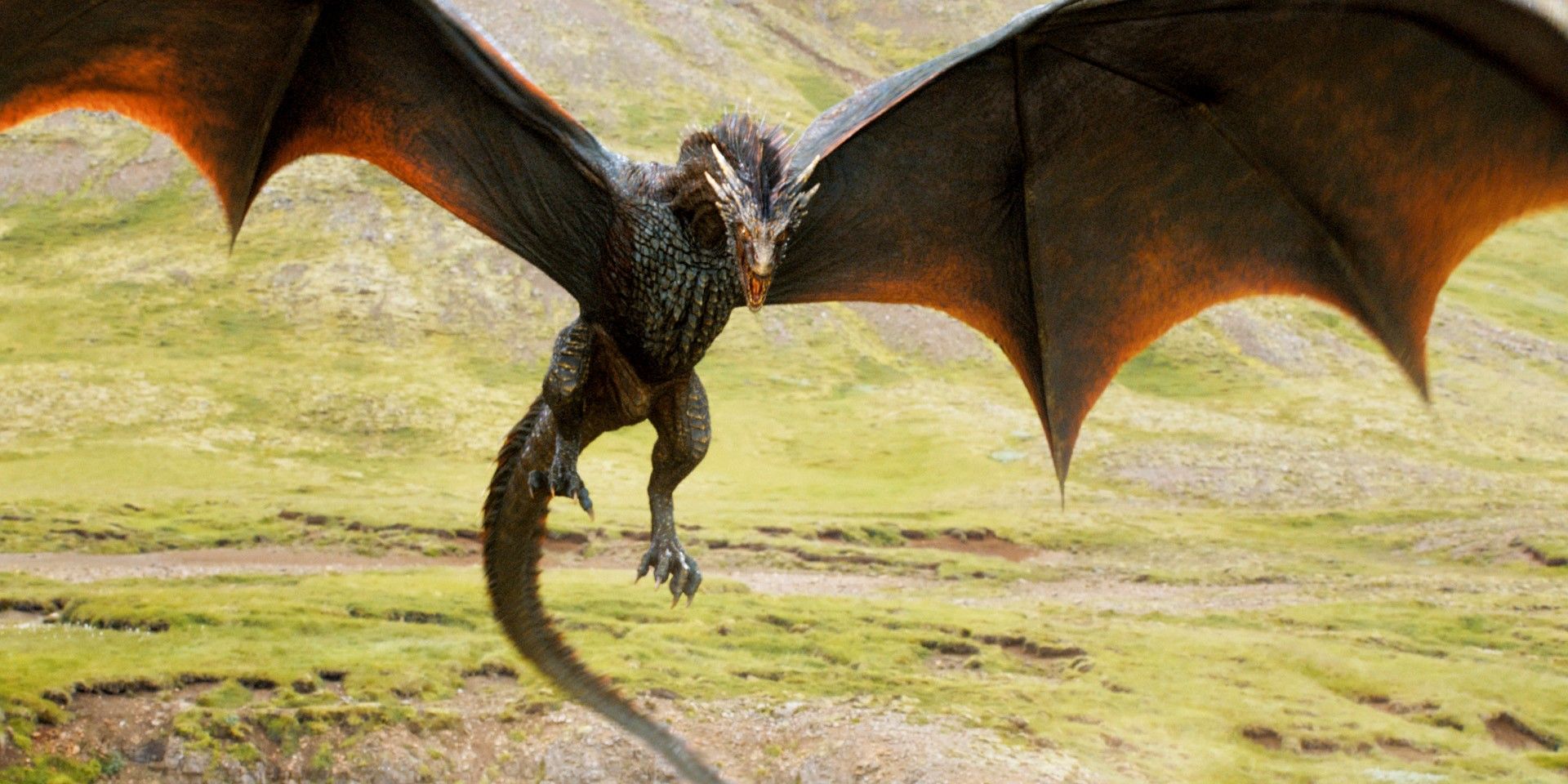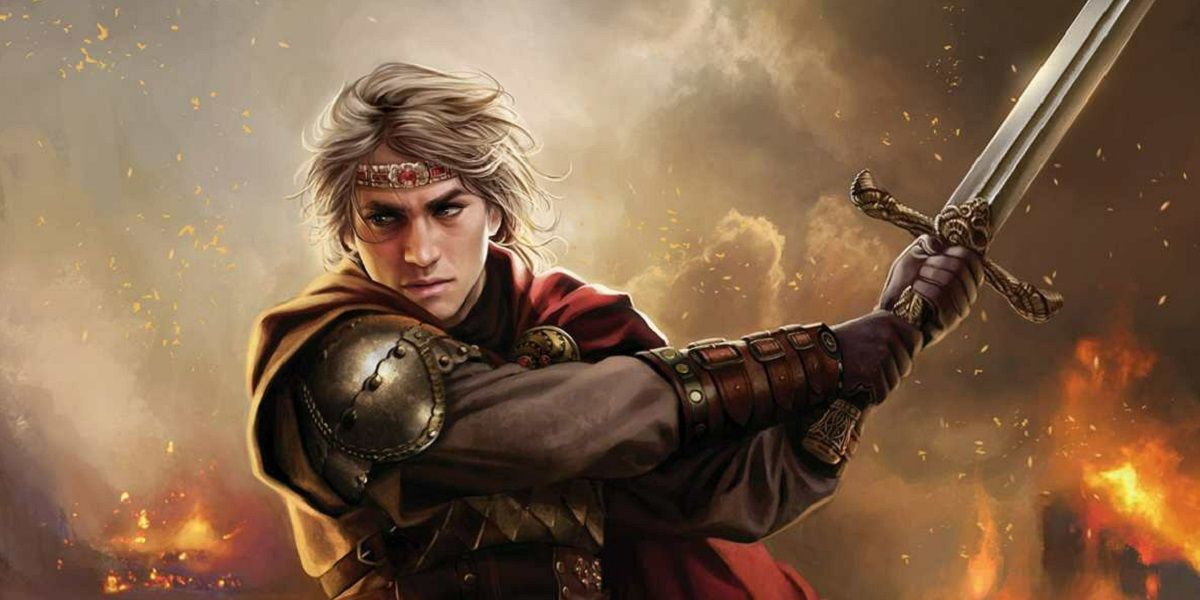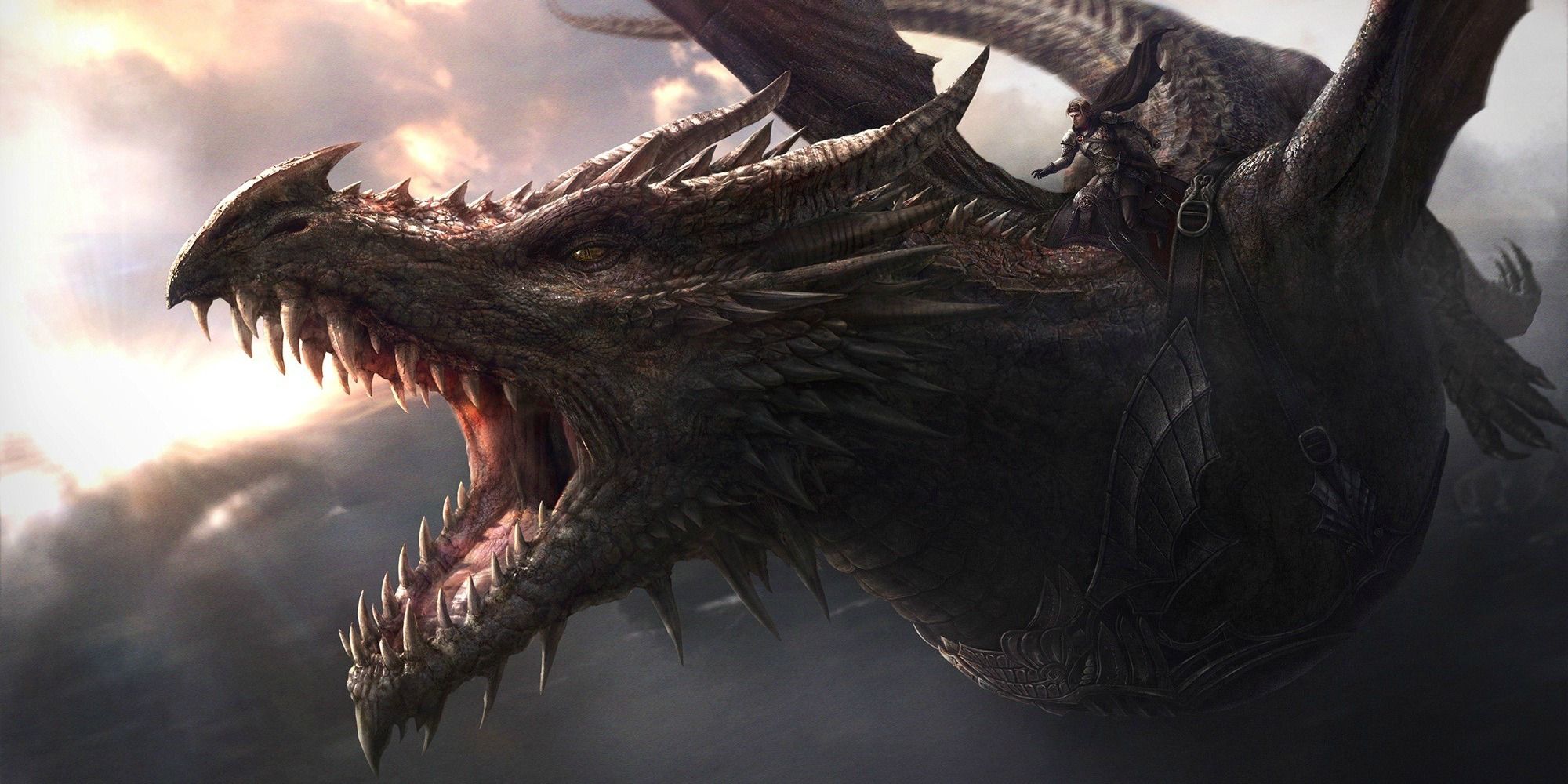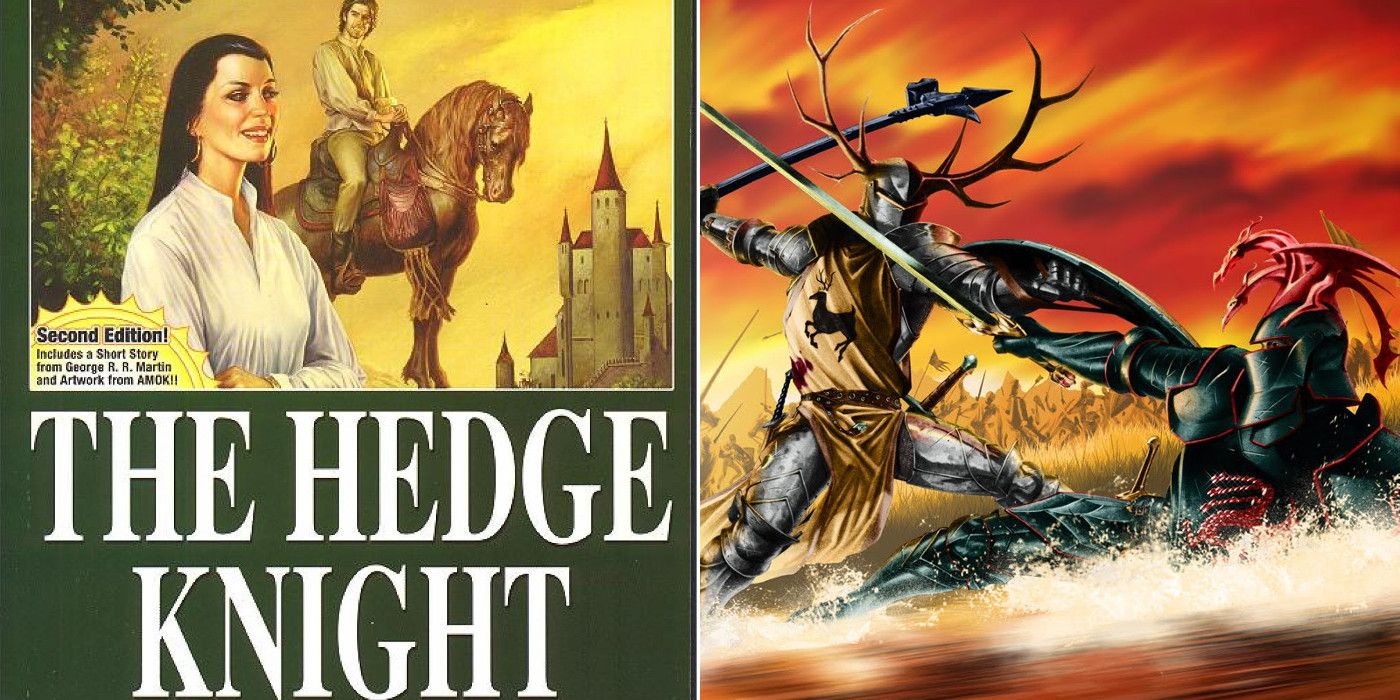With the recent news that HBO is considering a Game of Thrones spinoff series once the current show concludes in 2018, the floodgates opened with all sorts of different premises, sub-genres, and historical geekiness. As we’ve sketched out before, there is some ten thousand years of backstory that author George R.R. Martin invented for his fictitious land of Westeros, and there is so much packed into all those centuries that there are entire books written about it all. Finding material for a follow-up series would be a no-brainer.
But there’s one particular topic in all of these jumbles of fake history that jumps out again and again, practically begging to be brought to life on the small screen: the reign of the Targaryens, the first Great House to fuse seven kingdoms into the Seven Kingdoms of Westeros and to serve as this unified country’s original monarchs. They ruled for nearly 300 years, until an upstart usurper called Robert Baratheon (Mark Addy) came along and, with the help of the Lannisters, killed off the remaining Targaryen heirs – except for Daenerys Stormborn (Emilia Clarke) and her brother Viserys (Harry Lloyd) who ended up escaping to exile across the narrow sea. Viserys later ended up being killed by his own arrogance, but Daenerys is now amassing a giant army to take back the throne that is hers by rights.
One possible approach HBO could take, in contrast to the ongoing drama of Game of Thrones, would be to do an anthology show: following a different time period every season, and thereby providing highlights of the original line of kings. Alternatively, the producers could pick one specific event from Westweros history and fashion an entire production around that, thereby leaving the door open for several spinoff series. Either way, here are three historical incidents that would make for exceptionally compelling television.
Aegon’s Conquest
Aegon the Conqueror, the first of the future Targaryen monarchs, is the fine fellow who decided, after his family’s ancestral home of Valyria was consumed by the Doom (probably an apocalyptic eruption of volcanoes and other ecological disasters), to seek out new lands to colonize and new a legacy to claim as his own. He ultimately set his sights on Westeros, which was just beyond the outermost reaches of the Valyrian Freehold, and began a bloody, turbulent, and thoroughly unprecedented two-year war that would see dragons let loose for the very first time in the history of the seven kingdoms.
The beauty of this particular premise is just how many different itches it could scratch simultaneously. Given how spectacularly Game of Thrones has tended to handle its war episodes (the second season’s “Blackwater,” season four’s “The Watchers on the Wall,” this year’s “Battle of the Bastards”), doing an entire show predicated around one of the most memorable – and bloody – wars is deliciously exciting. While the strategies are formulating and the battles are unfolding, meanwhile, we could get a personal glimpse into the man who would make incest the new Westerosi norm (well, at court, at least), providing more than enough in the way of drama, and we would also get more than just a few clues as to how the ancient Valyrians functioned (such as how they managed to learn fire-magic and tame the dragons) and how their mighty empire came crashing down to the ground, to boot.
Finally, if all that just somehow isn’t enough for you, we could also get to see first-hand how the mighty castle of Harrenhal got melted down from the Targaryens’ mighty dragons, or how King’s Landing was founded and the Iron Throne itself constructed.
The Dance of the Dragons
If there’s one conflict that’s even deadlier and larger-than-life than Aegon’s Conquest, it would have to be the so-called Dance of the Dragons, the Targaryen civil war that saw brother fight sister and, of course, dragon kill dragon. A battle of succession over the throne (like most things in Game of Thrones’s domain) between half-siblings, the war started 129 years after Aegon’s coronation as the first Westerosi king and ended two long and devastating years later, leaving behind many dead bodies – especially those of the dragons themselves – and burnt-out sections of the Seven Kingdoms. It would take decades, if not longer, for the realms to heal, both figuratively and literally.
Unlike the Targaryen invasion a century-and-a-half earlier, the Dance of the Dragons actually has some George Martin-provided narratives dedicated to exploring its execution and its fallout, offering a great deal of personal drama to accompany the historical developments. These two novellas, The Rogue Prince, or A King’s Brother and The Princess and the Queen, or The Blacks and the Greens, serve very much like the book series A Song of Ice and Fire does to Thrones itself, making for what would be sure to be a strong dynamic and a winning combination once again.
The Tales of Dunk and Egg
Okay – this is the real crux of the matter, the specific story that would almost certainly make for the single most compelling successor to Game of Thrones and provide one of the most engaging (and, more importantly, differentiating) premises imaginable.
The collection of novellas that fans have lovingly referred to as the Tales of Dunk and Egg follow two main characters as they travel the Seven Kingdoms and learn a thing or two about life (and love) in the process: the bottom-of-the-barrel hedge knight Dunk, who would one day become known as Ser Duncan the Tall, the lord commander of the Kingsguard, and his page, Egg, who would ultimately be crowned King Aegon V Targaryen. Their journeys together, starting roughly 90 years before Thrones, are an interesting and varied collection of stories, ranging from the comedic to the tragic, and sketch out how the two become the men they were apparently always destined to be.
In addition to having the most varied and dynamic narrative set-ups possible, there’s also certain elements of intrigue that hover over the characters. Although not yet confirmed (no, Martin hasn’t finished writing these tomes, either, and he probably won’t for at least the next decade), it’s largely believed that Aegon V is personally responsible for the destruction of the Targaryen’s summer residence of Summerhall, a mysterious-but-nonetheless-important incident that would trigger the series of events that ultimately results in Daernys’s becoming the Mother of Dragons.
Need more prequel reasons for why the Tales of Dunk and Egg should make it to the small screen? Here’s three: it’s recently been confirmed that Dunk is the ancestor of Brienne of Tarth (Gwendoline Christie), Aegon V is the father of Mad King Aerys II (y’know, the man who would turn Houses Stark, Baratheon, and Arryn against him and start Robert’s Rebellion), and the Three-Eyed Crow (Max von Sydow) is a recurring character in the novellas, going by the name of Lord Bloodraven, the Hand of the King.
Game of Thrones returns to HBO for its seventh (and penultimate) season in the summer of 2017.




